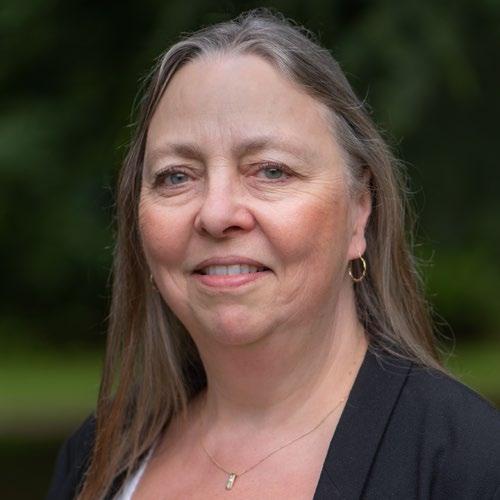
2 minute read
Message from the Chief Executive Officer
Managing Together for Biodiversity
By Chistine Houghton, Chief Executive Officer
THE UNITED NATIONS’ Sustainable Development Goal 15 is to “protect, restore and promote sustainable use of terrestrial ecosystems, sustainably manage forests, combat desertification, and halt and reverse land degradation and halt biodiversity loss” (United Nations Department of Economic and
Social Affairs, Sustainable Development). How we meet this goal—and it must be how not if—will require that we look beyond economic benefits to the long-term benefits of environmental sustainability.
While not perfect, here in
British Columbia we have taken some important steps.
One was the recognition of applied biology professionals as critical to sustainable resource management. Being the first jurisdiction in the world to bring reserved practice—or practice rights—into force, the province has clearly indicated that it puts a priority on ensuring that a qualified, competent and accountable applied biology professional is assessing, interpreting and recommending mitigation measures or alternative solutions as it relates to impacts on the receiving environment.
But applied biologists are only part of the answer. There is much we can learn from the people who have lived here for well over 10,000 years and who have successfully and sustainably cared for the lands and waters. That knowledge has been passed down from generation to generation and it plays a critical role in meeting the United Nations’ Goal 15.
The Government of Canada offered concrete recognition of this
Knowledge with $800 million in funding for four large Indigenousled conservation projects covering almost one million square
kilometres in British Columbia, Northwest Territories, northern Ontario and Nunavut. The BC project is being led by 17 Nations of the North Pacific Coast that will develop a unique model designed to provide sustainable funding for community-led conservation projects in the Great Bear Sea. These projects are working towards a vision that reestablishes and protects healthy marine ecosystems and restores Indigenous governance There is much we can learn and stewardship. from the people who have lived As well, the Province has here for well over 10,000 years stepped up in the wake of the and who have successfully and BC Supreme Court’s decision, which required the Province and sustainably cared for the lands Blueberry River First Nations and waters. (Blueberry) to work together to develop land management processes in Blueberry territory.
The Province has so far committed
$35 million for Blueberry to undertake activities to “heal the land” while creating employment opportunities for Blueberry River First Nations members. And at our 2022 Conference, delegates heard of collaborative initiatives between First Nations and registrants of the College in wildlife management and beginning the work to address cumulative effects, which have resulted in better results in environmental stewardships that have benefited all of us. Indigenous stewardship of the lands and waters goes back from time immemorial; regulated applied biology professionals have only been around for twenty years (and with reserved practice, only since September 1, 2022). But by listening and learning from Indigenous Peoples, and working collaboratively, we can all play a part in meeting the United Nations’ Sustainable Development Goal 15.








